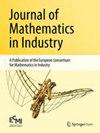匈牙利水痘传播动力学建模
IF 1.7
Q3 MATHEMATICS, INTERDISCIPLINARY APPLICATIONS
引用次数: 7
摘要
匈牙利正在将水痘带状疱疹病毒(VZV)疫苗引入常规疫苗接种计划,因此了解当前的传播动态并估计该疾病的关键参数非常重要。通过比较不同情景的预测,数学模型在为公共卫生政策决策提供建议方面非常有用。首先,我们考虑一个简单的区室模型,其中包括VZV的关键特征,如病毒的潜伏期和带状疱疹的再激活,以及外源性免疫增强。在得到基本繁殖数$R_{0}$后,对模型进行数学分析,并证明了阈值动力学:如果$R_{0}\leq 1$,则病毒将被根除,而如果$R_{0}>1$,则存在一种地方性平衡,病毒在人群中均匀地持续存在。然后,我们将模型扩展到包括季节性因素,并将其拟合到匈牙利的每月发病率数据中。结果表明,除季节性外,病害动态还具有内在的多年周期性。我们还研究了模型输出对系统参数和漏报率的敏感性,并提供了$R_{0}$的估计。本文章由计算机程序翻译,如有差异,请以英文原文为准。
Modeling the transmission dynamics of varicella in Hungary
Vaccines against varicella-zoster virus (VZV) are under introduction in Hungary into the routine vaccination schedule, hence it is important to understand the current transmission dynamics and to estimate the key parameters of the disease. Mathematical models can be greatly useful in advising public health policy decision making by comparing predictions for different scenarios. First we consider a simple compartmental model that includes key features of VZV such as latency and reactivation of the virus as zoster, and exogeneous boosting of immunity. After deriving the basic reproduction number $R_{0}$, the model is analysed mathematically and the threshold dynamics is proven: if $R_{0}\leq 1$ then the virus will be eradicated, while if $R_{0}>1$ then an endemic equilibrium exists and the virus uniformly persists in the population. Then we extend the model to include seasonality, and fit it to monthly incidence data from Hungary. It is shown that besides the seasonality, the disease dynamics has intrinsic multi-annual periodicity. We also investigate the sensitivity of the model outputs to the system parameters and the underreporting ratio, and provide estimates for $R_{0}$.
求助全文
通过发布文献求助,成功后即可免费获取论文全文。
去求助
来源期刊

Journal of Mathematics in Industry
MATHEMATICS, INTERDISCIPLINARY APPLICATIONS-
CiteScore
5.00
自引率
0.00%
发文量
12
审稿时长
13 weeks
 求助内容:
求助内容: 应助结果提醒方式:
应助结果提醒方式:


